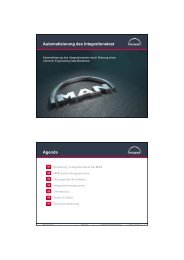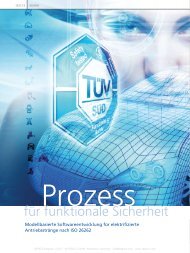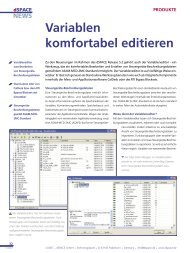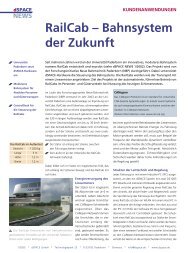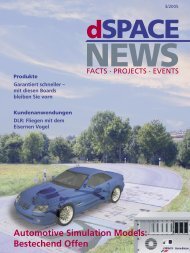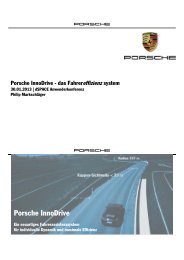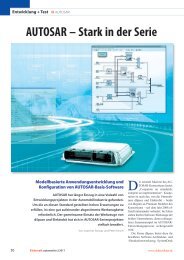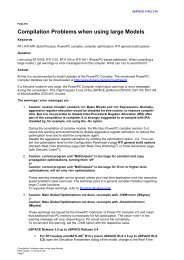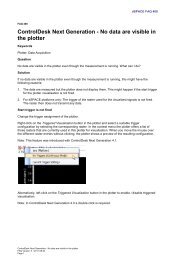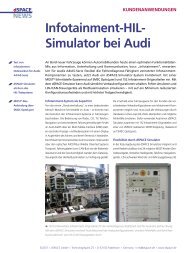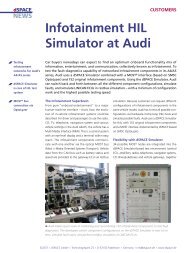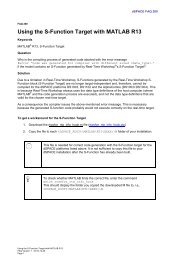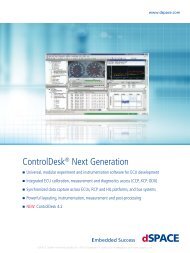magazinE - dSPACE
magazinE - dSPACE
magazinE - dSPACE
You also want an ePaper? Increase the reach of your titles
YUMPU automatically turns print PDFs into web optimized ePapers that Google loves.
A conversation with Dr. Herbert Hanselmann:<br />
To mark <strong>dSPACE</strong>’s 20th anniversary, the<br />
company’s founder and president describes<br />
how an idea became an internationally<br />
successful company.<br />
Dr. Hanselmann, before we talk<br />
about the early days of <strong>dSPACE</strong>,<br />
could you tell us how you became<br />
interested in control engineering?<br />
When I was 16, I read an article<br />
about cybernetics. I didn’t understand<br />
everything, but the article<br />
fascinated me and sparked my interest<br />
in this subject. When I decided<br />
which subject to study at the university,<br />
I chose electrical engineering,<br />
and from there it was almost<br />
inevitable that I would specialize in<br />
control engineering. I also had a side<br />
job developing controls for the<br />
machine tools of a small neighborhood<br />
company.<br />
What events encouraged you to<br />
found the <strong>dSPACE</strong> company?<br />
While I was still working on finalizing<br />
my doctoral thesis at Karlsruhe<br />
University, I was approached by a<br />
distinguished researcher working at<br />
MercedesBenz, Joachim Lückel. He<br />
had been granted a professorship at<br />
the University of Paderborn, with the<br />
task of setting up a completely new<br />
and novel institute.<br />
I had really planned to go into<br />
industry, but this project was too<br />
interesting to say no. The main<br />
objective was to implement something<br />
that was known as “modern<br />
control engineering”, using relatively<br />
fast mechanical systems. In other<br />
words, mechatronics. Just one small<br />
thing was missing: We didn’t have<br />
any computers that were fast<br />
enough to calculate the higherorder<br />
control functions in real time.<br />
In 1981, partly working at home like<br />
a hobbyist, I constructed an Intel kit<br />
for a fairly exotic analogdigital<br />
signal processor. You couldn’t expect<br />
mechanical engineers to do the<br />
required optimal microcode program<br />
pAGe 49



